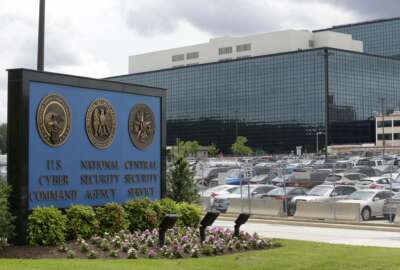The Government Accountability Office has significantly changed the face of government contracting.
In a ruling issued Oct. 8, GAO says agencies must set-aside any task or delivery order under a multiple award contract for small businesses if two or more of them are qualified to bid-commonly known as the Rule of Two.
GAO determined that the Navy should have restricted competition to small businesses under a task order to design and develop training and simulation products and systems. Delex, a small business, protested the task order.
GAO recommends the Navy cancel the current solicitation and reissue it as a small business set-aside if they can verify two or more small businesses are qualified to bid on it.
Ralph White, a GAO assistant general counsel, says he realizes the decision is controversial because it changes the task order environment.
“I understand it is a big deal and I wish we had the question and I wish we could have found a way to duck it,” White said with a smile during a panel discussion in Arlington, Va. sponsored by IAC Thursday.
White couldn’t say much about the decision because GAO is in the 10 day period where the Navy could ask for a reconsideration of the decision.
Roger Waldron, a former General Services Administration procurement official, says the decision could result in the Rule of Two becoming the standard for many task order contracts.
“This could lead to the bifurcation of small and large businesses under multiple award schedules,” says Waldron, now of counsel with Meyer Brown in Washington. “There could be multiple award contracts for small businesses and contracts for large businesses, and that wouldn’t be good for either of them.”
Waldron says the both large and small firms will be affected by the ruling. Large firms may have calculated their prices based on their ability to compete for all task orders. Now that GAO has ruled that agencies must use the Rule of Two for task orders, it could change how large firms price their services, he says.
Small firms also could be at a disadvantage because they would lose the ability to compete with large businesses under these contracts, Waldron adds.
Up until May 27, vendors could not protest task orders at all. But Congress passed a law in 2007, which was too affect in May, giving vendors the right to protest task orders worth more than $10 million.
Rob Burton, a former deputy administrator in the Office of Federal Procurement Policy, says the Bush administration did not support this provision because it would increase litigation.
Burton, now a partner with Venable law firm in Washington, says Congress was concerned about the management of task orders and whether they limited competition.
“I don’t think litigation is the way to solve contract management problems,” he says. “Congress’s decision to change its mind raises a lot of questions about the future of task order contracting.”
Burton says in 2007 agencies spent more than 50 percent of their procurement budget through task orders and modifications of task orders-up from 14 percent in 1990.
GAO’s White says vendors have brought about 70 task order protests before GAO since May. Overall, vendors filed about 1,700 protests in 2008, up from 1,400 in 2007.
The ability for vendors to protest task orders is causing some agencies to slow down their procurement system to ensure they are getting everything correct.
Karen Kopf, acting director of GSA’s FedSim group, says her office is reviewing work three and four times to make sure everything is proper.
Lee Harvey, deputy director in the Army’s Program Executive Office Enterprise Information Services (PEO-EIS), says they are taking a hard look at all of their 120 multiple award contracts and deciding how to move forward in the future.
“One of the things we may have to do is the big bang theory where we have one big contract and one contractor for each contract, and that is all,” Harvey says. “We don’t think this is the best way, but we have to have the support we need for the warfighter in place and it is frustrating when these contracts get held up in protest.”
Donald Wilson, a contracting officer with the National Institutes of Health Information Technology Acquisition and Assessment Center, says they are rewriting their policies and procedures to address the new requirements.
Wilson says 10 percent of their task orders are above $10 million.
White says GAO will track the impact and number of task order protests and submit a report to Congress.
He adds that the protest provision does expire in 2011.
“We’ve had to change our processes to be more structured,” Kopf says. “We are following the letter of the law because we don’t want to get stuck in protestland.”
—–
On the Web:
FederalNewsRadio – Coming into the services age
FederalNewsRadio – Set Aside or Waste of Effort?
Government Accountability Office – Delex bid protest decision
(Copyright 2008 by FederalNewsRadio.com. All Rights Reserved.)
Copyright
© 2024 Federal News Network. All rights reserved. This website is not intended for users located within the European Economic Area.





